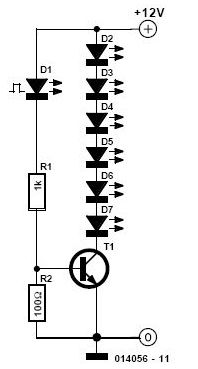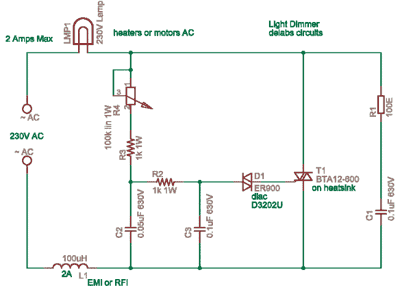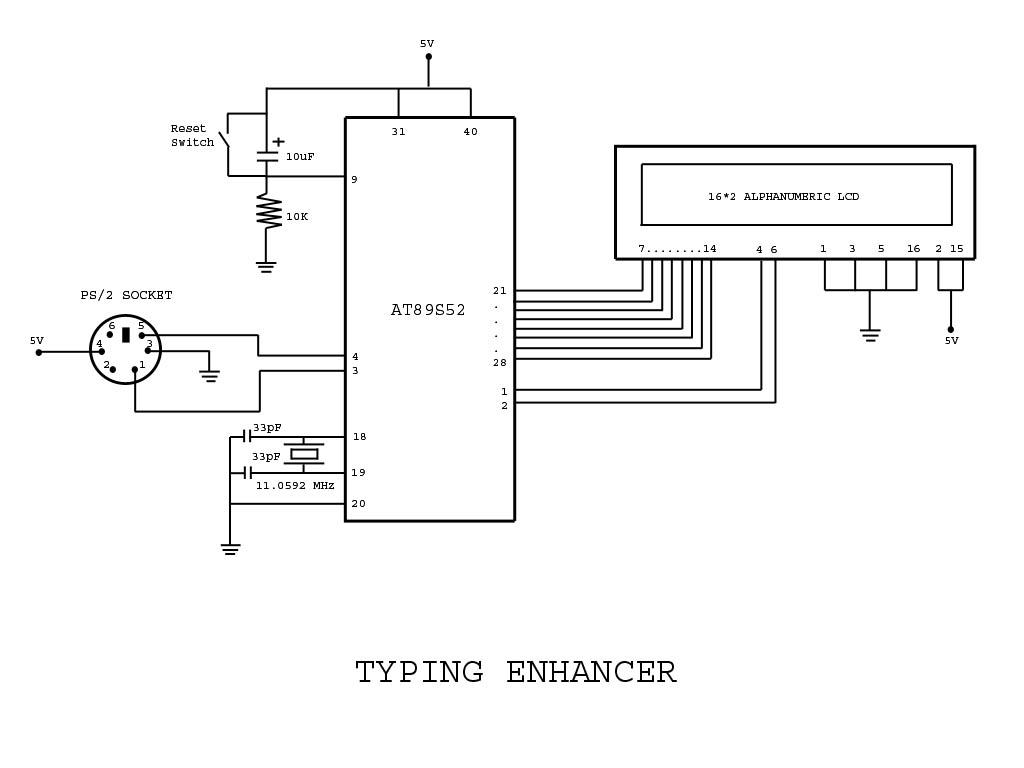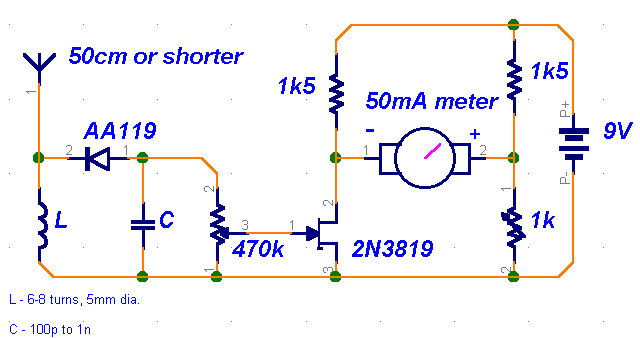
led flashing circuit

Its state is constantly changing, and this change affects the flow of current and voltage, which is visible with the two LEDs. The speed of the LED flasher can be adjusted with potentiometer P1. As an astable multivibrator, the circuit has no stable state but oscillates continuously between two states. The two transistors, T1 and T2, alternate and lock each other in turn. The smaller the capacitor value and the lower the resistance, the quicker the appropriate LED turns off, allowing the other to immediately turn on. The transistors do not necessarily have to be BC547B; BC238 or similar small-signal transistors can also be used. It is recommended to always use equivalent transistors. If one of the transistors is defective, incorrect, or malfunctioning, it will affect the overall functionality of the circuit. One LED lights up while the other is dimmed. The two flashing LED circuit is designed for 9 volts but can operate at lower voltages as well. In this design, red LEDs are used, but by changing the series resistors R1 and R4, different LED colors can also be employed.
This circuit operates as an astable multivibrator, which is a fundamental configuration for generating square wave signals. The continuous oscillation between the two states is created by the feedback mechanism established through the two transistors, T1 and T2. When one transistor turns on, it drives the other into a cutoff state, creating a rapid switching effect that results in the flashing of the LEDs.
The timing characteristics of the circuit are primarily determined by the values of the resistors and capacitors connected to the transistors. The potentiometer P1 allows for the adjustment of the timing, providing control over the frequency of the LED flashing. A lower resistance or capacitance value will yield a faster oscillation frequency, leading to quicker transitions between the on and off states of the LEDs.
The circuit's design is robust, allowing for the use of various small-signal transistors, such as the BC238, provided that they have similar characteristics to the BC547B. This flexibility in component selection ensures that replacements can be made without significantly affecting circuit performance. However, it is crucial to ensure that both transistors are functioning correctly, as a failure in either component can disrupt the oscillation and diminish the circuit's overall functionality.
The circuit is designed to operate effectively at a nominal voltage of 9 volts, making it suitable for a variety of applications. Lower operating voltages can also be utilized, which may require recalibration of the resistors to maintain the desired flashing frequency. The use of red LEDs is standard in this design, but the circuit can be adapted to accommodate different colors by adjusting the series resistors R1 and R4, which control the current flowing through the LEDs, thus allowing for a range of visual effects based on the selected LED color.It`s state is constantly changing and this change affect the flow of current and voltage and the effect will be visible with the two leds. The speed of the led flasher may be adjusted with potentiometer P1. Being an astable multivibrator, the circuit has no stable state but oscillates continuously between the two states back and forth.
The two transistors T1 and T2 turn and lock each other by turn. The smaller the capacitor value is and the smaller the resistance, the appropriate LED goes out faster, for the benefit of other, who then immediately turns on. The transistors do not necessarily have to be BC547B, you may use BC238 or similar small-signal transistors.
It is recommended to always use the equivalent transistors. If one of the transistors is defective, wrong or have a malfunction, so does this to the full functionality of this circuit. One LED lights up and the other is dimmed. The two flashing led circuit is designed for 9 Volts but it works at lower voltages too. In this design we used red leds but by changing the series resistors R1 and R4 you can also use different LED colors.
🔗 External reference
This circuit operates as an astable multivibrator, which is a fundamental configuration for generating square wave signals. The continuous oscillation between the two states is created by the feedback mechanism established through the two transistors, T1 and T2. When one transistor turns on, it drives the other into a cutoff state, creating a rapid switching effect that results in the flashing of the LEDs.
The timing characteristics of the circuit are primarily determined by the values of the resistors and capacitors connected to the transistors. The potentiometer P1 allows for the adjustment of the timing, providing control over the frequency of the LED flashing. A lower resistance or capacitance value will yield a faster oscillation frequency, leading to quicker transitions between the on and off states of the LEDs.
The circuit's design is robust, allowing for the use of various small-signal transistors, such as the BC238, provided that they have similar characteristics to the BC547B. This flexibility in component selection ensures that replacements can be made without significantly affecting circuit performance. However, it is crucial to ensure that both transistors are functioning correctly, as a failure in either component can disrupt the oscillation and diminish the circuit's overall functionality.
The circuit is designed to operate effectively at a nominal voltage of 9 volts, making it suitable for a variety of applications. Lower operating voltages can also be utilized, which may require recalibration of the resistors to maintain the desired flashing frequency. The use of red LEDs is standard in this design, but the circuit can be adapted to accommodate different colors by adjusting the series resistors R1 and R4, which control the current flowing through the LEDs, thus allowing for a range of visual effects based on the selected LED color.It`s state is constantly changing and this change affect the flow of current and voltage and the effect will be visible with the two leds. The speed of the led flasher may be adjusted with potentiometer P1. Being an astable multivibrator, the circuit has no stable state but oscillates continuously between the two states back and forth.
The two transistors T1 and T2 turn and lock each other by turn. The smaller the capacitor value is and the smaller the resistance, the appropriate LED goes out faster, for the benefit of other, who then immediately turns on. The transistors do not necessarily have to be BC547B, you may use BC238 or similar small-signal transistors.
It is recommended to always use the equivalent transistors. If one of the transistors is defective, wrong or have a malfunction, so does this to the full functionality of this circuit. One LED lights up and the other is dimmed. The two flashing led circuit is designed for 9 Volts but it works at lower voltages too. In this design we used red leds but by changing the series resistors R1 and R4 you can also use different LED colors.
🔗 External reference





